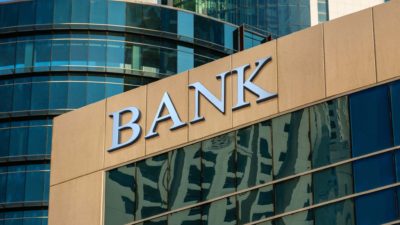Every ASX investor and their dog (or perhaps cat) have been talking about Commonwealth Bank of Australia (ASX: CBA) shares in 2024.
Yes, the broader Australian share market has had a fairly decent year this year, gaining close to 5% year to date, as well as climbing above 8,000 points for the first time ever to hit several new all-time highs.
But CBA shares may have just been an even hotter topic for ASX investors over the past nine months or so. After all, Commonwealth Bank is now the largest stock on the ASX 200 by market capitalisation and one that thousands of investors have owned for many years, or even decades.
So it goes without saying that when our largest (and one of the most widely-held) stocks smashes through dozens of new all-time highs and grows its market cap by almost a quarter over a nine-month span, people are going to sit up and pay attention.
CBA shares shoot the moon
That's exactly what has happened with CBA shares this year. Back at the start of January, this ASX 200 bank stock was trading at just under $114 a share. That was after dipping as low as $96.15 just three months prior.
But it didn't take long for CBA to blow through $115 a share and then $120. It took a few months before we saw the bank at $125 and then $130. Since June, we've seen CommBank stock hit $135 and then $140. And just this Tuesday, we saw yet another record set when CBA climbed up to its now-reigning all-time record of $145.24.
Now many commentators, brokers and analysts might tell you that CBA shares are overvalued at their current levels. But it can be difficult for normal, everyday investors to reach that conclusion on their own. Particularly when jargon like 'cost of equity', 'internal cost of capital performance', and 'net interest margins' are employed.
Don't get me wrong, I happen to think CBA shares are overpriced myself. But I've come to that conclusion using a far simpler metric: the bank's dividend yield.
Like most ASX banks, CBA shares have traditionally been purchased with the expectation of relatively high dividend payouts (with full franking credits attached) relative to other stocks on the ASX.
It's quite normal to see ASX banks trade with dividend yields above 5% or even 6%.
If CBA was trading in that mid-$90 range that we saw in October last year, its shares would currently have a dividend yield of 4.84%. Not too bad, one might think, given the traditional and understandable premium that CBA commands relative to the other ASX banks.
What does an ASX bank dividend yield tell us?
If Commonwealth Bank was trading at $88, which only happened back in mid-2022, it would be offering a dividend yield of 5.28%.
But it's not. At yesterday's closing stock price of $141.05, CBA sported a dividend yield of 3.3%. Now, that's rather un-bank-like. Many other blue-chip shares, including Coles Group Ltd (ASX: COL), Transurban Group (ASX: TCL), and Telstra Group Ltd (ASX: TLS), currently boast higher yields than that.
In fact, ANZ Group Holdings Ltd (ASX: (ASX: ANZ)'s current yield is getting uncomfortably close to doubling that at 5.74%.
CBA's dividend yield is low. So low, in fact, that in my calculations, new investors have only been offered such a low starting yield once in the past two decades. And that was during the COVID-induced dividend drought of 2021.
It's not that CBA has stopped increasing its dividend. This month's final dividend payment will be its largest-ever single payout. CBA shares have simply climbed too fast for its dividend yield to keep up. Remember, the dividend yield is a function of both raw dividends per share and the company's share price.
Foolish takeaway
Now, I'm not saying that CBA is a bad company or that it won't continue to grow. It probably will, given its dominance of the Australian financial landscape. And 3.3% (fully franked) isn't a bad return by normal ASX dividend standards. It's still more than what Woolworths Group Ltd (ASX: WOW) or CSL Ltd (ASX: CSL) offer today.
But it does tell me that CBA shares have almost never been this expensive, even if we are using this one simple metric. That's enough to ring some warning bells for me.








